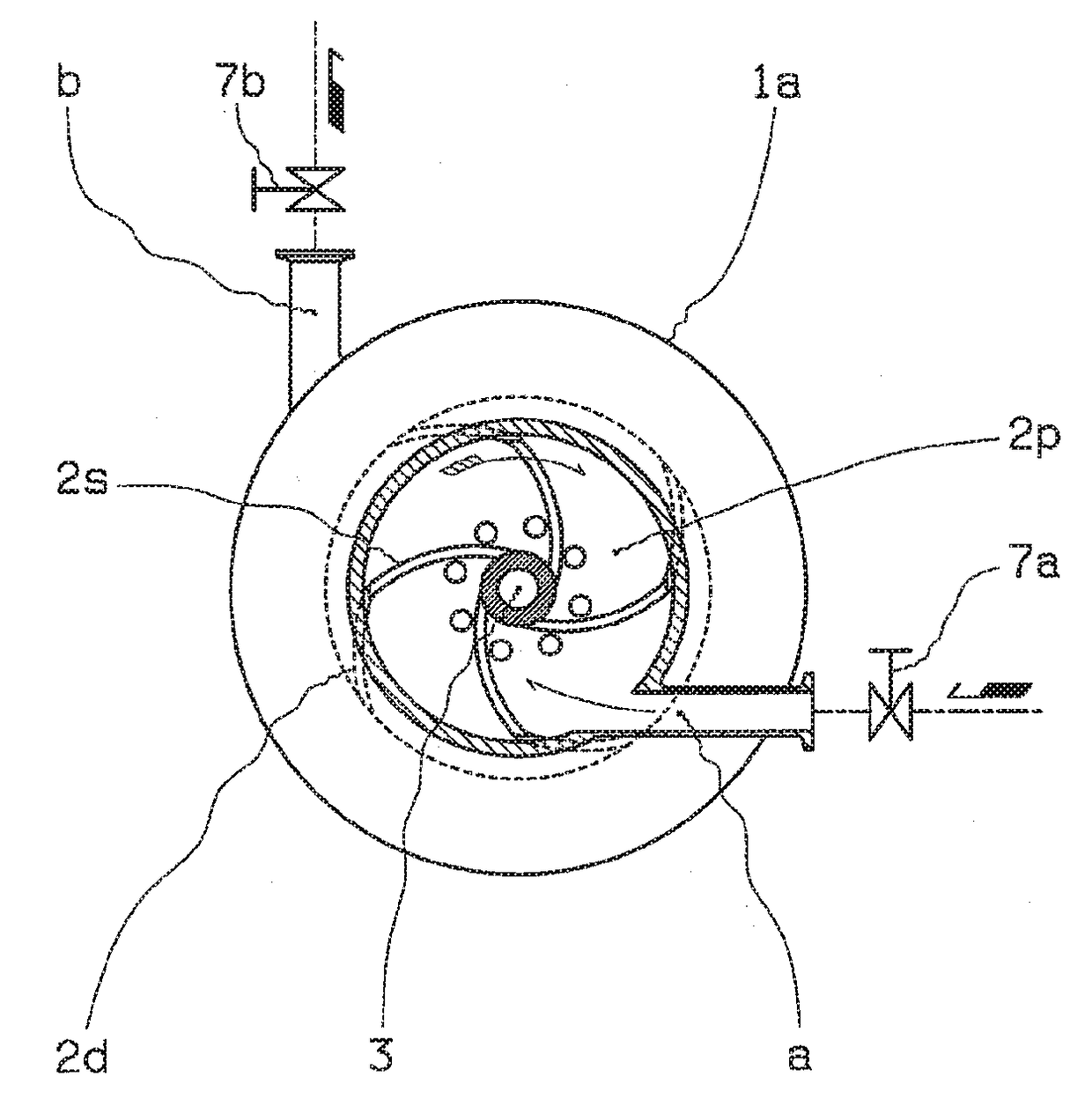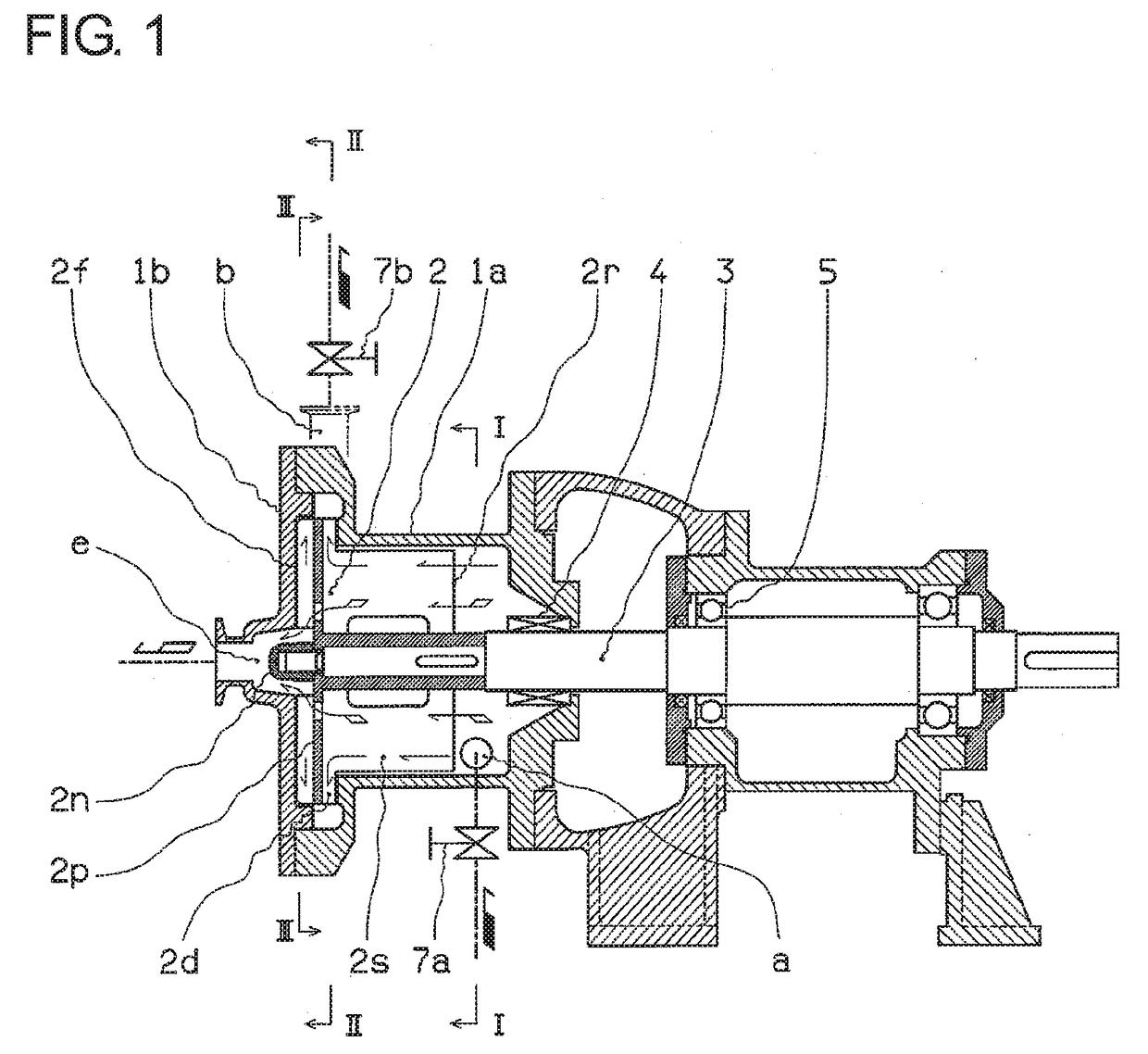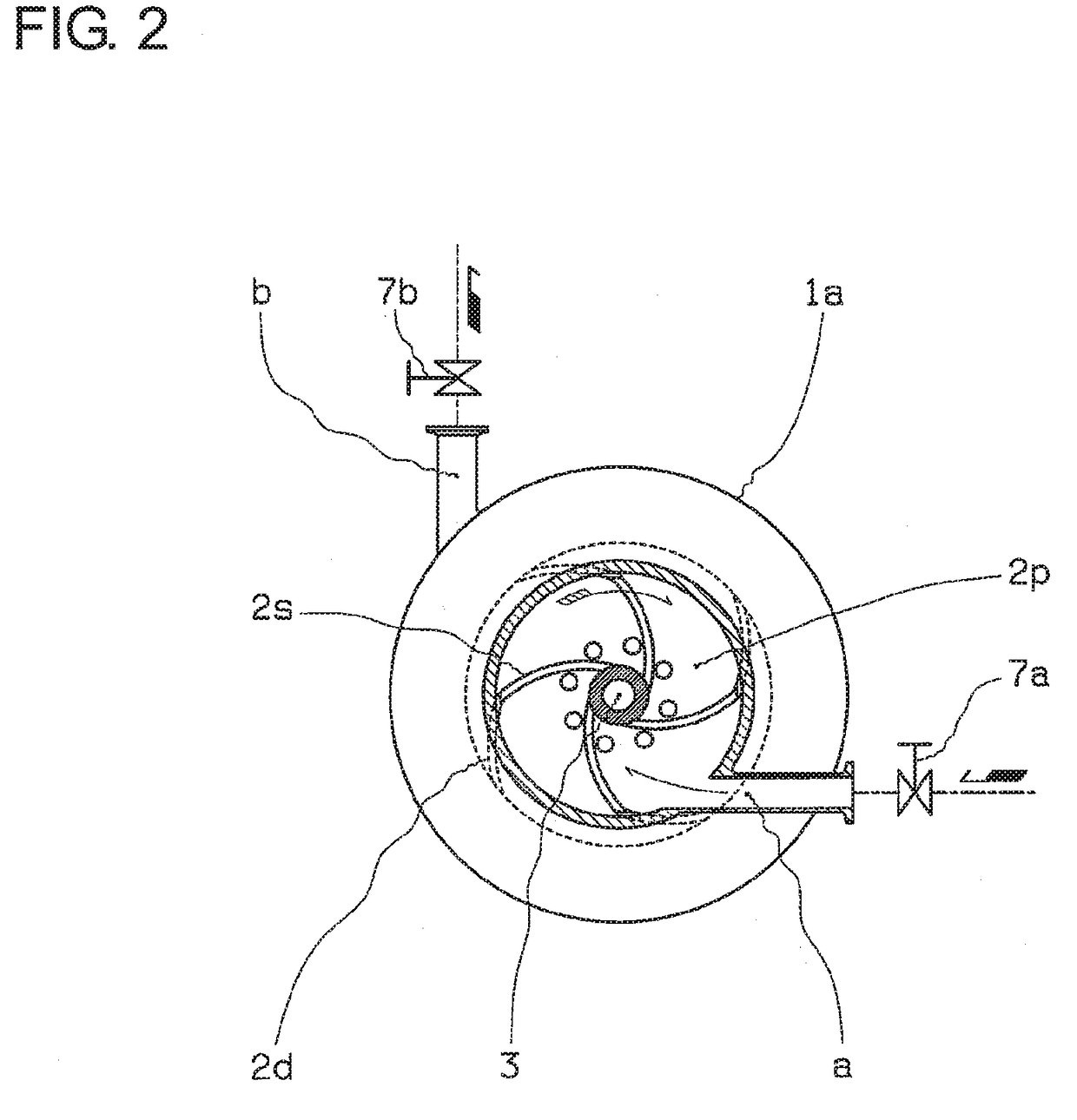Gas-liquid separator
a gas-liquid separator and separator technology, applied in the direction of liquid fuel engines, separation processes, liquid degasification, etc., can solve the problems of increased replacement costs, clogging of the membrane, and the disadvantage of large space requirements, so as to achieve advanced gas-liquid separation, easy cleaning and reassembly, and easy expansion in size
- Summary
- Abstract
- Description
- Claims
- Application Information
AI Technical Summary
Benefits of technology
Problems solved by technology
Method used
Image
Examples
embodiment 1
[0066]FIG. 1 shows the first embodiment of the present invention, FIG. 2 shows section I-I in FIG. 1, FIG. 3 shows section II-II in FIG. 1, and FIG. 4 shows section III-III in FIG. 1.
[0067]A casing can be separated into 1a and 1b and forms one cylindrical chamber when connected, and an impeller 2 with a suitable number of vanes is disposed in the casing 1a and 1b. The impeller 2, with an outer diameter that allows for a small clearance with respect to the inner peripheral wall of the casing 1a, is mounted to one end of a rotating shaft 3. Although it may be mounted by screwing, it is here mounted with an impeller nut 2n as illustrated in this embodiment. The rotating shaft 3 is supported by a shaft bearing part 5, and penetrates the casing 1a with tight sealing at a shaft sealing part 4. A motor, not shown in the figure, drives the rotation.
[0068]The impeller 2 is provided with a separation impeller part 2s which performs gas-liquid separation in all areas around the rotating periph...
embodiment 2
[0089]FIG. 5 shows the second embodiment, and FIG. 6 shows section I-I in FIG. 5.
[0090]In this embodiment, the opening for the suction inlet a to the inside of the casing 1a is disposed in a position inwardly apart from the inner peripheral wall of the casing 1a by a predetermined distance so as to improve degassing efficiency.
[0091]One of the important factors in improving the degassing efficiency of a gas-liquid separator is increasing the gas-liquid boundary area (the surface area where liquid is exposed to the negative pressure generated by the vacuum device). For this purpose, specific methods include enlarging the diameter of the annular boundary surface by throttling the inflow to reduce the radial thickness of the annular liquid layer generated by the centrifugal separation, or enlarging the casing 1a itself either in the radial direction or in the axial direction. However, the former method creates a problematic trade-off relationship with the maximum processable flow rate,...
embodiment 3
[0099]FIG. 7 shows the third embodiment, and FIG. 8 shows section I-I in FIG. 7.
[0100]In this embodiment, the suction inlet a in the apparatus of the second embodiment is modified such that its opening is formed in a straight nozzle or spray nozzle shape. This shape enables the pumped liquid to be dispersed in the cavity area more easily, further increasing the gas-liquid boundary area and improving the degassing efficiency.
[0101]This nozzle or spray can also function as a throttle for the pumped liquid.
[0102]As shown in the figure, the baffle member 2q can be suitably provided with small vanes to enhance centrifugal separation of the pumped liquid.
[0103]The rest of the constitution and functions are the same as those of the second embodiment.
PUM
| Property | Measurement | Unit |
|---|---|---|
| centrifugal force | aaaaa | aaaaa |
| discharge force | aaaaa | aaaaa |
| distance | aaaaa | aaaaa |
Abstract
Description
Claims
Application Information
 Login to View More
Login to View More - R&D
- Intellectual Property
- Life Sciences
- Materials
- Tech Scout
- Unparalleled Data Quality
- Higher Quality Content
- 60% Fewer Hallucinations
Browse by: Latest US Patents, China's latest patents, Technical Efficacy Thesaurus, Application Domain, Technology Topic, Popular Technical Reports.
© 2025 PatSnap. All rights reserved.Legal|Privacy policy|Modern Slavery Act Transparency Statement|Sitemap|About US| Contact US: help@patsnap.com



